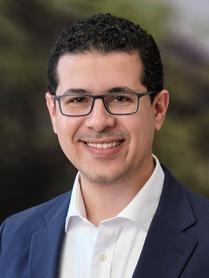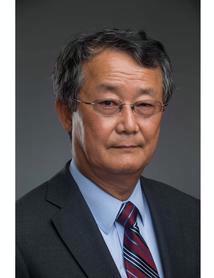Applied Acoustics Lab

The Applied Acoustics Lab conducts basic research and provides consulting and testing services in the fields of acoustics, vibration, and noise control. The lab collaborates with industry partners, academic institutions, and researchers to advance acoustic innovation.
Research Areas
- Noise Control Engineering
- Noise Control and Industrial Noise Reduction
- Sound Exposure and Impulsive Noise
- Sound Propagation in Ducts
- Muffler and Silencer Design
- Advanced Acoustic Materials
- Metamaterials and Phononic Crystals
- 3D-printed Acoustic Materials and Devices
- Acoustic and Ultrasonic Material Design and Characterization
- Electroacoustics
- Loudspeaker and Microphone Testing
- Ultrasonic Transducer Development
- Smart Acoustic Sensors
- Vibroacoustics
- Structural Vibration Analysis
- Panel and Cavity Resonances
- Coupled Vibroacoustic Systems
Collaboration & Services
- Custom-designed acoustic simulations and experiments for research and development in the focus areas of the center
- Consulting on acoustic design, noise control, and product development
- Flexible facility access for external researchers and industry collaborators
- Sound Power Measurements (ISO 3744) – determine the sound power level emitted from a variety of devices
- Loudspeaker and Microphone Characterization – measure frequency, response, directivity, and sensitivity
- Vibro-Acoustic Interaction Testing – study how structural vibrations affect acoustic performance
Facilities

Our facility is equipped with advanced instrumentation to support a wide range of acoustic experiments, including:
- A full anechoic chamber (24' x 26' x 22') with an option to convert to semi-anechoic condition, suitable for test work in the frequency range of 100 Hz to 20,000 Hz.
- A Scanning Laser Doppler Vibrometer for non-contact vibration measurement
- A large selection of high-precision measurement microphones
- Multichannel data acquisition and analysis systems including a 24-channel system with real-time acoustic testing capability up to 50 kHz
- A wide selection of Vibration testing equipment (tri-axial accelerometers) for structural and acoustic interactions
- Calibrated noise sources and various loudspeakers
| Title | Role | Sponsor | Period |
| Infrared Camera Acoustic Noise Testing | L3Harris | 2024-2025 | |
| Audible Noise Characterization of a Sensor | L3Harris | 2024-2025 | |
| Access of Equipment and Facilities | CDC/NIOSH | 2022-2026 | |
| OSHE program, UC-NIOSH ERC | PI | NIOSH | 7/1/14-6/30/16 |
| Development of Nanotech Minor | PI | NSF | 12/1/13-11/30/15 |
| Squeak and Rattle Noise in Automobiles | PI | Hyundai Motors | 9/1/14-8/31/15 |
| Analysis of Squeeze Film Damper | PI | GE Aviation | 9/1/13-8/30/15 |
| Aeromechanics Lab, Pahse 1 - 4 | PI | GE Aviation | 9/1/12-12/30/15 |
| OSHE Program, UC-NIOSH NIOSH ERC | PI | NIOSH | 7/1/08-6/30/12 |
| Development of a Receptance Based Modeling Technique for Hand-Arm Vibration | PI | PRP/NIOSH ERC | 7/1/07-6/30/08 |
| Engineering education through degree-long project experience | PI | NSF | 7/1/07-6/30/09 |
| Development of risk assessment methof for complex noise | PI | NIOSH | 7/1/06-6/30/08 |
| Development of NI Labview system for compressor sound and vibration testing | PI | Copeland Co. | 3/1/06-8/31/06 |
| Development of an acoustic shock tube | PI | NIOSH | 3/1/06-9/31/06 |
| Hot-rolled steel plate analysis | PI | POSTECH | 1/105-12/31/05 |
| Modification of hearing protector fit test software | PI | NIOSH | 8/1/04-12/31/05 |
| Measurement of sound power and SPL from various pieces of power tools | PI | NIOSH | 7/1/04-10/31/04 |
| Multifractal analysis for occupational health study | participant | NIOSH | 7/1/02-6/30/04 |
| Measurement and characterization of noise from powe tools | PI | NIOSH | 3/1/04-12/31/04 |
| Measurement and characterization of noise from powe tools | PI | NIOSH | 3/1/04-12/31/04 |
| Measurement and characterization of noise from powe tools | PI | NIOSH | 12/1/02-12/31/03 |
| Assessment of sound power levels from powered hand tools used in the construction industry | PI | NIOSH | 5/1/01-11/20/02 |
| Assessment of sound power levels from powered hand tools used in the construction industry | PI | NIOSH | 5/1/01-11/30/02 |
| Characterization of dynamic and acoustic properties of double layered shells for optimal design of automotive mufflers | PI | Arvin Exhaust Technology Center | 9/1/99-8/31/01 |
| Development of a design procedure to reduce brake squeal in rotor-disk systems | PI | Akebono Brake Systems | 1/1/96-3/31/99 |
| Development of a design procedure to reduce brake squeal in rotor-disk systems | PI | Akebono Brake Systems | 1/1/96-3/31/99 |
| Vibroacoustic analysis of suction accumulator for noise reduction of rotary compressors | PI | Carrier Co. | 1/1/97-12/31/97 |
| Vibroacoustic analysis of suction accumulator for noise reduction of rotary compressors | PI | Carrier Co. | 1/1/97-12/31/97 |
| Feasibility study of using acous. Array technique for ranking panale contributions | PI | Ford Motor Co. | 1/1/96-12/31/96 |
| Efficiency improvement of a reciprocating compressor | PI | Samsung | 9/1/95-2/28/97 |
| Design improvement strategies of small heremetic compressors | PI | Samsung | 7/1/93-9/30/94 |
| Sound reduction of high speed air compressor | PI | Campbell | 3/1/93-8/31/93 |
| Development of expert design system for compressors | PI | Compressor research consortium | 10/1/91-1/31/94 |
Contact & Research Inquiries
If you're interested in collaborating with our lab, conducting noise evaluations, or using our facility, please reach out to Dr. Ahmed Allam.
The Applied Acoustics Lab is located at:
2851 Woodside Drive
Rhodes Hall 436A
Cincinnati, OH 45221
Faculty

Ahmed Allam
Asst Professor, CEAS - Mechanical Eng
685 Rhodes Hall
The Metasonics lab specializes in acoustic materials, transducers, and systems for emerging domains such as the Internet of Things and Industry 4.0. We use sound and ultrasound for sensing, communication, and power transfer in challenging environments such as deep in the ocean, in the human body, and in nuclear waste containers. Our group designs and builds acoustic devices, circuits, and signal processing software to generate acoustic and ultrasonic waves, control their propagation, and convert them to useful electrical signals. We use 3D printing to design metamaterials that control acoustic wave propagation and use these metamaterials to build acoustic devices such as lenses, matching layers, and collimators. We also combine 3D printing and metamaterials to design novel piezoelectric (ultrasonic) transducers for novel applications.

Jay Kim
Professor - Emeritus, CEAS - Mechanical Eng